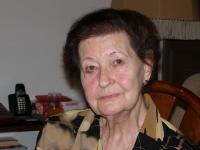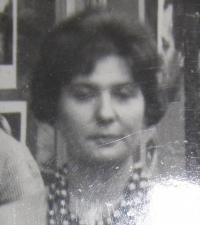I know that the Germans committed a horrible offence against us, but I considered it unfair to see violence against German mothers and old people

Stáhnout obrázek
Dagmar Nebeská, née Poláčková was born on the 17th of February 1926 in Prague to a Czech-Jewish family. The witness was listed for transport to Terezín Ghetto in March 1943. She contracted hepatitis and later tuberculosis. She lived together with other twenty girls in barracks in Terezín; Truda Sekaninová, future Communist Member of Parliament was their educator. Dagmar spoke about her as a second mother. She worked in agriculture outside the Terezín Ghetto walls. She experienced last transports directed from Terezín to Auschwitz in October 1944 and also arrivals of devastated prisoners from death marches before the end of war. She studied business school and worked in Transport Enterprise after the liberation of Terezín.

